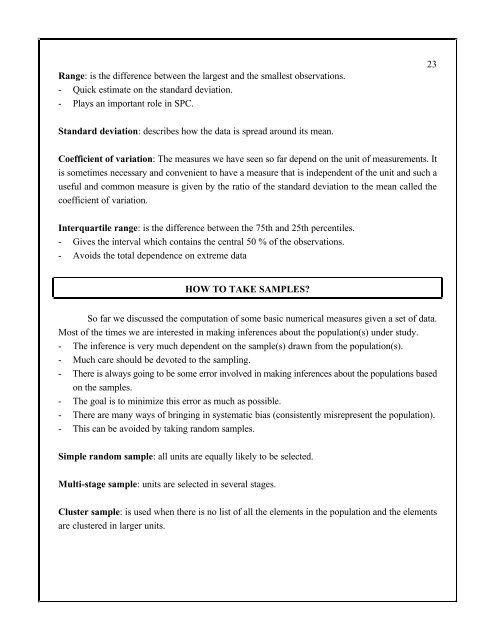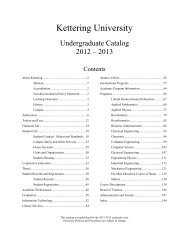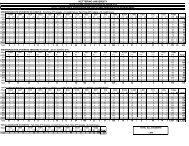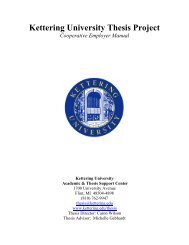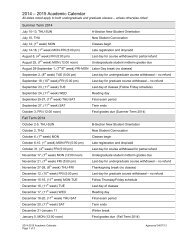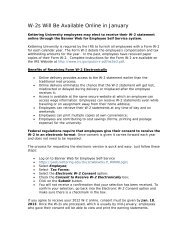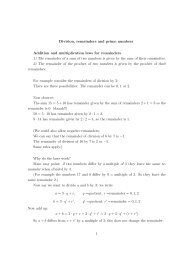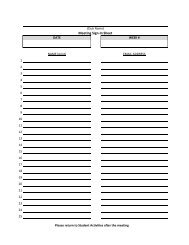1 CLASS LECTURE NOTES - What is Applied Statistics ...
1 CLASS LECTURE NOTES - What is Applied Statistics ...
1 CLASS LECTURE NOTES - What is Applied Statistics ...
Create successful ePaper yourself
Turn your PDF publications into a flip-book with our unique Google optimized e-Paper software.
Range: <strong>is</strong> the difference between the largest and the smallest observations.<br />
- Quick estimate on the standard deviation.<br />
- Plays an important role in SPC.<br />
23<br />
Standard deviation: describes how the data <strong>is</strong> spread around its mean.<br />
Coefficient of variation: The measures we have seen so far depend on the unit of measurements. It<br />
<strong>is</strong> sometimes necessary and convenient to have a measure that <strong>is</strong> independent of the unit and such a<br />
useful and common measure <strong>is</strong> given by the ratio of the standard deviation to the mean called the<br />
coefficient of variation.<br />
Interquartile range: <strong>is</strong> the difference between the 75th and 25th percentiles.<br />
- Gives the interval which contains the central 50 % of the observations.<br />
- Avoids the total dependence on extreme data<br />
HOW TO TAKE SAMPLES?<br />
So far we d<strong>is</strong>cussed the computation of some basic numerical measures given a set of data.<br />
Most of the times we are interested in making inferences about the population(s) under study.<br />
- The inference <strong>is</strong> very much dependent on the sample(s) drawn from the population(s).<br />
- Much care should be devoted to the sampling.<br />
- There <strong>is</strong> always going to be some error involved in making inferences about the populations based<br />
on the samples.<br />
- The goal <strong>is</strong> to minimize th<strong>is</strong> error as much as possible.<br />
- There are many ways of bringing in systematic bias (cons<strong>is</strong>tently m<strong>is</strong>represent the population).<br />
- Th<strong>is</strong> can be avoided by taking random samples.<br />
Simple random sample: all units are equally likely to be selected.<br />
Multi-stage sample: units are selected in several stages.<br />
Cluster sample: <strong>is</strong> used when there <strong>is</strong> no l<strong>is</strong>t of all the elements in the population and the elements<br />
are clustered in larger units.


